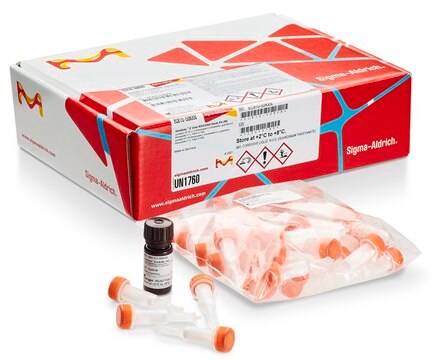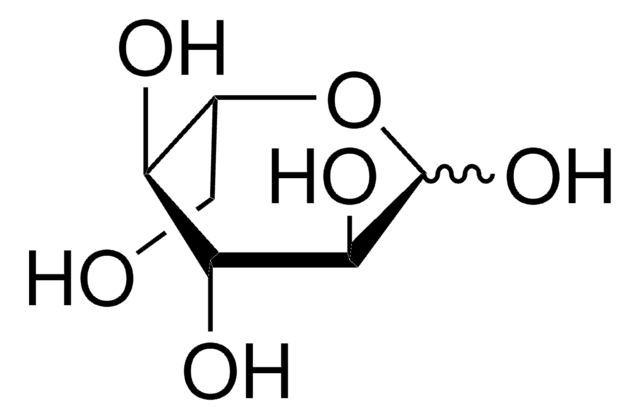G8644
D-(+)-Glicose
100 g/L in H2O, sterile-filtered, BioXtra, suitable for cell culture
Sinônimo(s):
D-Glucopyranose
About This Item
Produtos recomendados
esterilidade
sterile-filtered
Nível de qualidade
linha de produto
BioXtra
forma
solution
concentração
100 g/L in H2O
técnica(s)
cell culture | mammalian: suitable
Impurezas
endotoxin, tested
temperatura de armazenamento
room temp
cadeia de caracteres SMILES
OC[C@H]1O[C@H](O)[C@H](O)[C@@H](O)[C@@H]1O
InChI
1S/C6H12O6/c7-1-2-3(8)4(9)5(10)6(11)12-2/h2-11H,1H2/t2-,3-,4+,5-,6+/m1/s1
chave InChI
WQZGKKKJIJFFOK-DVKNGEFBSA-N
Informações sobre genes
human ... PYGM(5837)
Procurando produtos similares? Visita Guia de comparação de produtos
Descrição geral
Aplicação
- to determine extracellular acidification rate (ECAR) or oxygen consumption rate (OCR) in human CB CD34+cells by Seahorse extracellular flux assay
- as a negative control in human umbilical vein endothelial cell (HUVEC) culture
- as a supplement for culturing colonic biopsies
Ações bioquímicas/fisiológicas
Outras notas
This solution has been sterilized by filtration.
Não está encontrando o produto certo?
Experimente o nosso Ferramenta de seleção de produtos.
Código de classe de armazenamento
12 - Non Combustible Liquids
Classe de risco de água (WGK)
nwg
Ponto de fulgor (°F)
Not applicable
Ponto de fulgor (°C)
Not applicable
Certificados de análise (COA)
Busque Certificados de análise (COA) digitando o Número do Lote do produto. Os números de lote e remessa podem ser encontrados no rótulo de um produto após a palavra “Lot” ou “Batch”.
Já possui este produto?
Encontre a documentação dos produtos que você adquiriu recentemente na biblioteca de documentos.
Os clientes também visualizaram
Nossa equipe de cientistas tem experiência em todas as áreas de pesquisa, incluindo Life Sciences, ciência de materiais, síntese química, cromatografia, química analítica e muitas outras.
Entre em contato com a assistência técnica







